The affectionate, cheerful little Havanese is a toy dog hailing from Cuba with a big personality in a little body. Often termed “velcro dogs,” the Havanese breed loves its owners unconditionally and seeks to play, sit, and socialize with their families whenever they can.
If you’ve recently adopted a Havanese dog or are considering a puppy from the breed, keep reading. Below, you’ll discover a comprehensive progression guide of the Havanese breed — including how big the dog will get, when to switch to adult food, and what commands are most important to teach.
Havanese Summary

The pint-sized Havanese has remained a popular breed since 1996.
©Sandra Huber/Shutterstock.com
The American Kennel Club recognized the Havanese as a breed in 1996. Since its inclusion in the organization’s list, the Havanese has stayed in the top 20% of favorite dogs. As of the 2022 list, it’s the 25 most popular purebred breed out of 200.
Havanese dogs have a silky coat that comes in a variety of colors and markings. The most common color for a Havanese is white, though black, chocolate, cream, and fawn remain common sights as well. The distinctive tail of the Havanese — curled-over and plumed — gives these outgoing pups a unique appearance different from similar parent breeds like the bichon frise.
“The Havanese is known for its playful and affectionate nature,” said Ray McNally, a dog trainer and behaviorist with 30 years of experience and the CEO of Barky Dog Toys. “They’re social butterflies and thrive on human interaction. One time when I was at a dog park, a Havanese was the life of the party, making friends with every dog and human around!”
Havanese Growth and Weight Chart by Age
Gender does not play a large role in weight change. Havanese grow quickly in the first few months. The chart below estimates the weight progression of a full-grown seven-pound Havanese from birth to two years old.
| Age | Male Weight (in pounds) | Female Weight (in pounds) |
|---|---|---|
| Birth | 7 ounces | 7 ounces |
| 1 Month | 1.7 | 1.7 |
| 6 Weeks | 2.1 | 2.1 |
| 2 Months | 2.6 | 2.6 |
| 3 Months | 3 | 3 |
| 4 Months | 3.5 | 3.5 |
| 5 Months | 3.9 | 3.9 |
| 6 Months | 4.4 | 4.4 |
| 7 Months | 4.8 | 4.8 |
| 8 Months | 5.1 | 5.1 |
| 9 Months | 5.4 | 5.4 |
| 10 Months | 5.7 | 5.7 |
| 11 Months | 5.9 | 5.9 |
| 12 Months | 6.1 | 6.1 |
| 2 Years | 7 | 7 |
When Will My Havanese Stop Growing?
Small dogs tend to reach their height early in their puppyhood. Havanese dogs may not grow taller than what they stand at eight months old. That doesn’t mean their body won’t continue to fill out, though!
According to Dr. Mollie Newton, a veterinarian and founder of PetMeTwice, Havanese dogs will reach their full size between 12 and 18 months old. Growth depends on the individual dog’s body and lifestyle, though.
Keep your Havanese puppy’s vet appointments consistent in the first year of life. This ensures you have a handle on their vaccinations and the vet can monitor their growth. If your vet has concerns about your pup hitting milestones, they can help guide you toward better food, supplements, or activities that will aid in the dog’s development.
How Big Will My Havanese Be When It’s Fully Grown?

Your Havanese will weigh between seven and 13 pounds when full grown.
©Kanashi/iStock via Getty Images
As a member of the toy breed group, Havanese dogs won’t get very big when they’re fully grown. Between males and females, Havanese dogs will grow to between 8.5 and 11.5 inches and seven to 13 pounds, according to the American Kennel Club’s breed standards.
Unlike dogs outside of the toy group, Havanese males and females generally weigh very similarly and measure the same height. While gender doesn’t factor into the final size of a Havanese when it’s fully grown, ancestry, food, and exercise level do. Your vet will let you know if your Havanese dog needs to gain or lose weight to hit its growth milestones, especially in the first two years of its life.
When Should My Havanese Be Spayed or Neutered?
Spaying (for females) and neutering (for males) add more benefits than avoiding heat cycles or reducing aggression. In fact, in some situations, it’s genuinely life-saving.
Did you know that spaying and neutering lowers the risk for Havanese dogs to develop cancers in their reproductive systems? It also eliminates the option for surprise pregnancies — a good idea for female Havanese owners. Aim to spay female Havanese dogs at the very least by six years old; any pregnancy after that can put her life at significant risk. Pregnancy even before six years of age may be tough on her small body, too.
Depending on your Havanese’s size, timing may vary. Your vet can inform you when to get your pup spayed or neutered. Usually, owners want to get their female spayed before her first heat cycle, which can occur between four and six months. Neuter males around the six-month mark.
When consulting with your vet on when to spay or neuter, consider asking about additional surgeries or screenings your Havanese may need. While this isn’t the time to do an eye exam, your pup may have impacted baby teeth or bone issues that the vet can fix while your dog is already under anesthesia for the spaying/neutering.
When Should My Havanese Be House Broken?
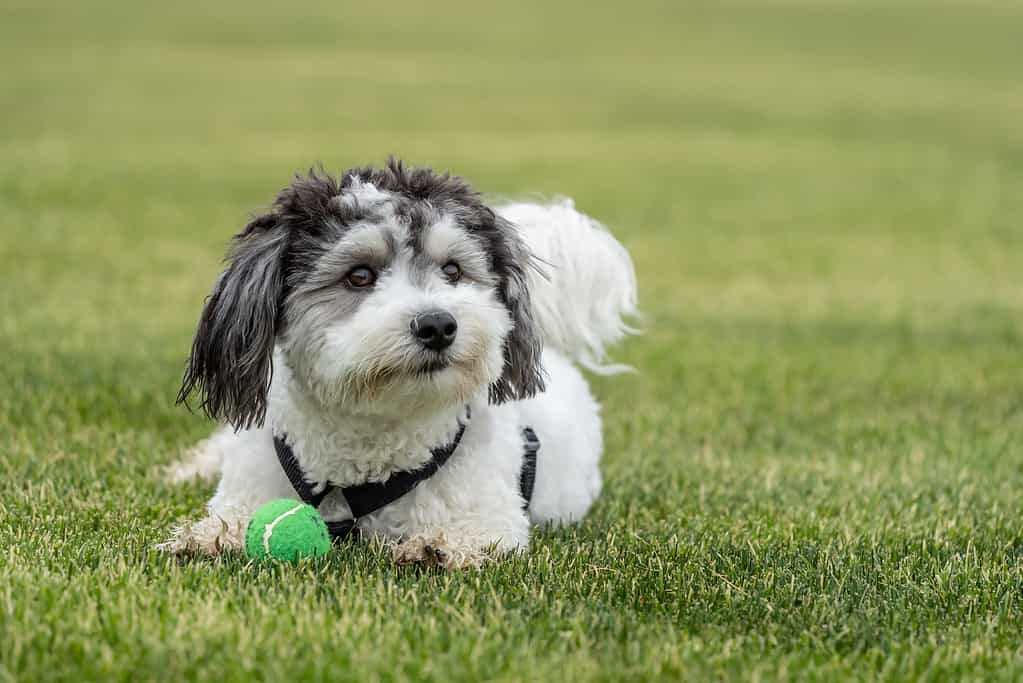
Keep your Havanese focused on pottying, not playing, when taking them outside to go.
©arlutz73/iStock via Getty Images
Young puppies, especially small Havanese dogs, can’t hold their bladders well until at least 12 weeks of age. That means for the first few weeks you may have your Havanese, you can expect frequent accidents in the house… unless you spend a lot of time outside with your pup on a leash.
The breeders of the Havanese Club of America assert that most Havanese dogs understand training and learn to go to the potty outside by four months old. If your Havanese is eight or nine months old and still has consistent accidents in the house, it’s most likely an issue with training, not the dog. With all behavior and health challenges, though, it’s a good idea to talk to your vet.
When you go to potty train your Havanese, strive for consistency, patience, and clear instruction. A mistake some new dog owners make is confusing playtime with potty time. While it’s an accidental issue, it doesn’t erase the confusion from your Havanese puppy’s mind. Playtime should happen inside and immediately after, they can go outside to potty. If they don’t potty in 10 minutes, they can go back inside — but not to play. Playing is a reward for pottying outside.
Additionally, playing outside all day, especially unattended, teaches young puppies they can potty anywhere. Havanese pups need consistent and clear instruction. Because they’re eager to please, they’ll work to listen to you — so long as they understand what you’re trying to communicate.
When Should My Havanese Stop Eating Puppy Food?
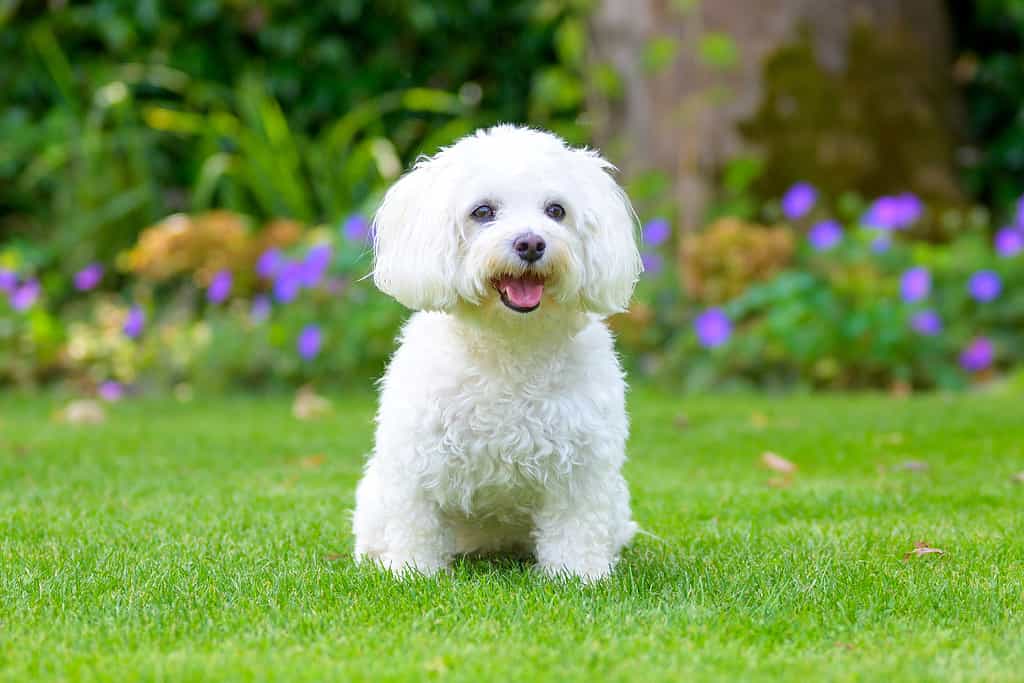
Most toy breeds transition from puppy food to adult food around the nine-month mark.
©mheim3011/iStock via Getty Images
When you adopt your Havanese pup, the breeder should have informed you of the type of food they’ve been feeding the pup and its littermates. Based on the food’s instructions, you should be able to determine when you can switch to adult food. Locate the graph on the back of the food bag to see what age the feeding instructions go up to. At a minimum, you should feed your Havanese puppy food until they’re six months old.
For toy breeds as a whole, owners can slowly start to transition from puppy food to adult food between nine and 12 months old. It has to do with a dog’s weight: small and toy dog breeds that weigh 20 pounds or less at full maturity like the Havanese are the first breeds to transition to adult food.
Before you switch food, come up with a transition plan that considers your dog’s gastrointestinal tract. Completely changing up the food between meals or days can create unnecessary problems and discomfort for your Havanese, so add a portion of the new food to the old food in your dog’s bowl every meal. Do this until the old food is the minority, and the new food has become the standard in the bowl. This process also helps you identify allergies your dog may have to a new food.
When Will My Havanese Start Losing Teeth?
Even if you don’t see their baby teeth on the floor or embedded in a toy, your Havanese will start losing its baby teeth around four months of age. They’ll continue to lose their baby teeth — and gain adult teeth — until they’re seven to nine months old.
Because the Havanese is a toy breed, owners should watch out for “snaggle teeth,” the colloquial term for baby teeth that don’t fall out before the adult teeth erupt in the gums. If your Havanese retains several baby teeth though the adult versions of the teeth have broken through as well, consult your vet on the best course of action. They may feel it’s a harmless situation — or they could recommend you have the surgeon take out those teeth when you schedule your Havanese’s spaying or neutering surgery.
When Should I Start Training My Havanese?
Havanese dogs want to make their owners proud and look forward to pleasing them. Couple that eagerness with a pretty high energy level and significant mental stimulation needs, and you have a puppy chomping at the bit to start training.
Training can start as early as nine or 12 weeks, but owners shouldn’t expect their new Havanese puppy to master complex tricks that early. Instead, they should work in several-minute spurts on the most important, basic commands and build up from a solid foundation.
“This breed is eager to please, which is a bonus for training. Yet, they’re sensitive. With the Havanese, always use positive reinforcement. A gentle tone and lots of praise work wonders,” said Dr. Newton.
Positive reinforcement remains the best way to train any dog breed. Ignore the bad behavior and reward the good to demonstrate how you want your puppy to behave without inspiring fear in them.
What Commands Should I Teach My Havanese First?
Sit is the most foundational command a dog can learn because it’s a natural stance they take. Once your Havanese associates the act of sitting with the word sit, they’re ready to take on some other basic obedience commands.
Besides sitting, the most vital commands include come and stay. Come will aid in recall — if your Havanese dog listens to you rather than external stimuli, the come command can get them out of potentially dangerous situations easily and calm them down when tensions run high in a multiple-dog environment. The stay command also comes in handy for the Havanese dog’s safety. When opening doors, poorly trained dogs let their curiosity get the best of them and sniff, jump, or run to investigate. By training your Havanese to stay even when a door is ajar, you prevent an accidental runaway situation.
After establishing a solid base of knowledge with sit, come, and stay, your Havanese should focus on potty and leash training. Prioritize the rest of the skills you’d like your Havanese to learn based on your lifestyle.
Common Health Issues Your Havanese Might Experience
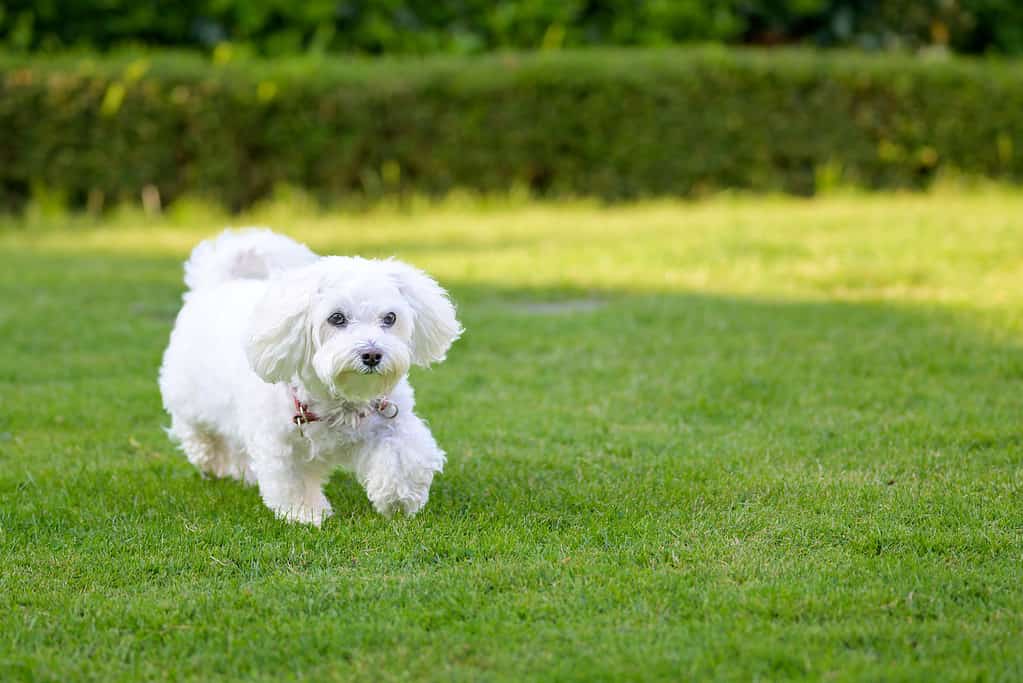
It’s not uncommon for older Havanese dogs to dislocate their kneecaps.
©mheim3011/iStock via Getty Images
For the most part, Havanese dogs are healthy. Puppies, especially from reputable breeders, have new litters tested for general health before adoption. As Havanese dogs age, they’re prone to several unique-to-the-breed conditions, including:
- Patellar luxation, also known as kneecap dislocation.
- Chondrodysplasia, or a mutation to have shorter-than-normal legs.
- Legg-Calve-Perthes disease, when the head of the femur breaks down inside the hip joint of a Havanese.
Some less serious but still concerning health problems the breed has include cataracts, cherry eye, hip dysplasia, and liver shunt. Liver shunts can be particularly dangerous, since they may go unnoticed but prolonged, untreated conditions may have fatal effects.
Despite the conditions above, the Havanese is a toy breed that has a significant life expectancy: between 14 and 16 years old. Keeping your Havanese healthy comes down to a few factors, including regular vet visits, proper food, healthy exercise, and mental stimulation.
Did you know that the Havanese Club of America offers awards to its members who get their dogs tested, and pass, health tests? They include:
- Patella evaluation.
- Hip evaluation.
- BAER testing.
- Ophthalmologist evaluation.
As your Havanese gets older, it will slow down and show less of the “puppy energy” it’s consistently demonstrated through its early life. While all dogs mellow out with age, owners should keep an eye on any clear behavior changes that depart from the norm. Failure to eat, sleep, or drink, or trouble walking, could indicate a deeper problem.
Pictures of Havanese as Puppies
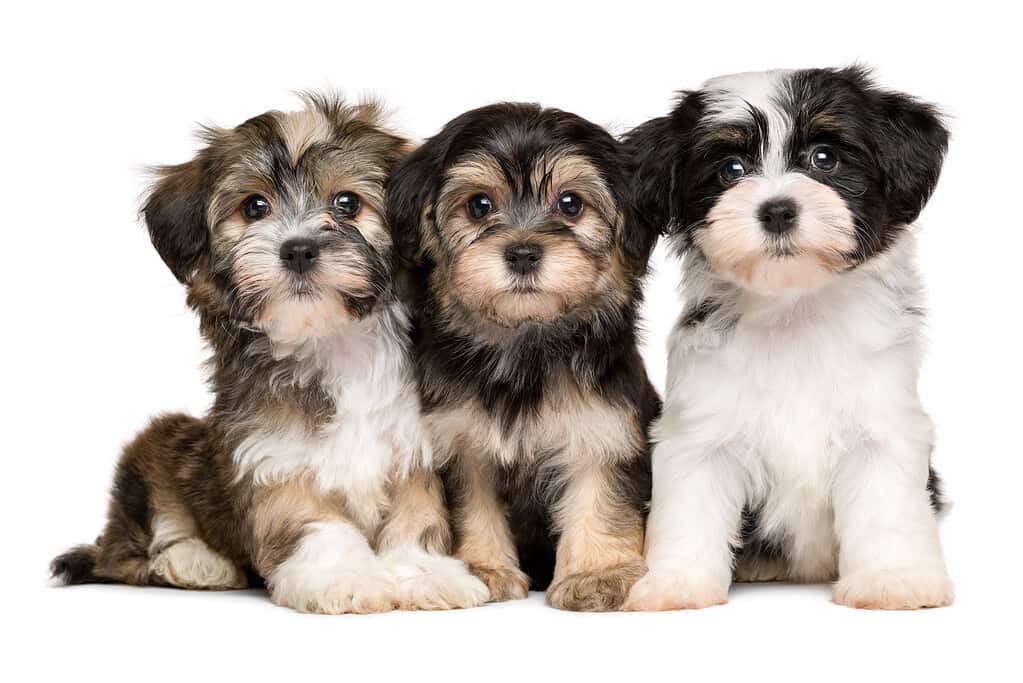
When born, Havanese dogs may only weigh a few pounds.
©Dorottya_Mathe/iStock via Getty Images

Havanese dogs like mental stimulation, like playing with toys outside for a change of scenery during the day.
©Dorottya Mathe/Shutterstock.com

Teaching a Havanese puppy to sit should be one of the first commands.
©Dorottya_Mathe/iStock via Getty Images
Pictures of Havanese at 6 Months
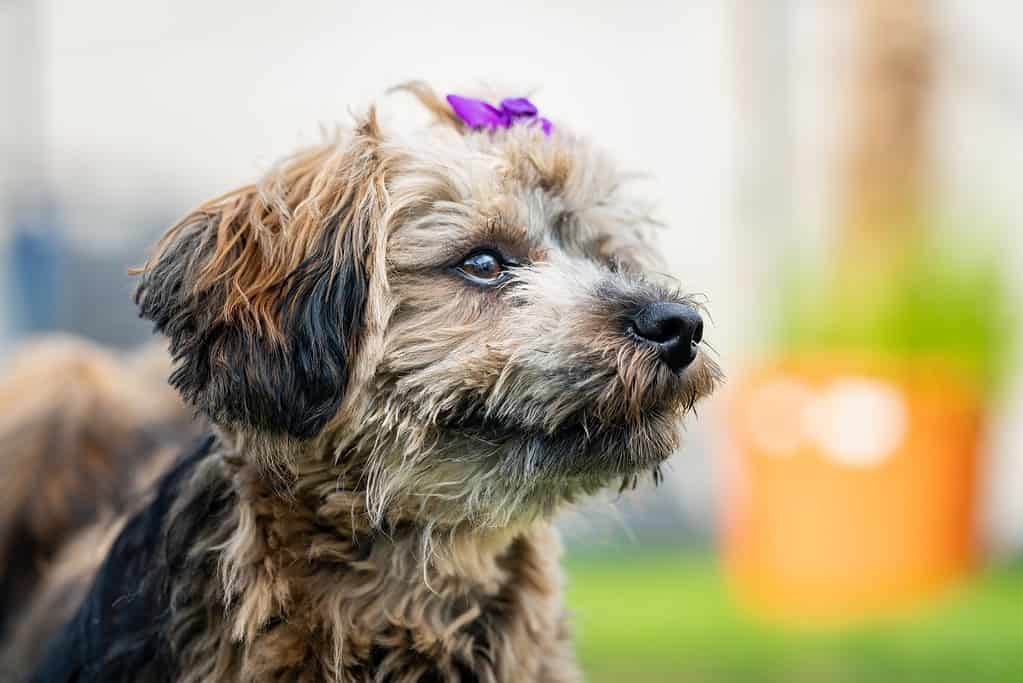
By six months old, your Havanese should have lost the majority of its baby teeth.
©Wirestock/iStock via Getty Images

Havanese puppies need a lot of sleep to maintain their energetic and curious personalities.
©Dorottya_Mathe/iStock via Getty Images

Consider talking to your vet about spaying and neutering around the six month mark of your Havanese’s life.
©mheim3011/iStock via Getty Images
Pictures of Fully Grown Havanese
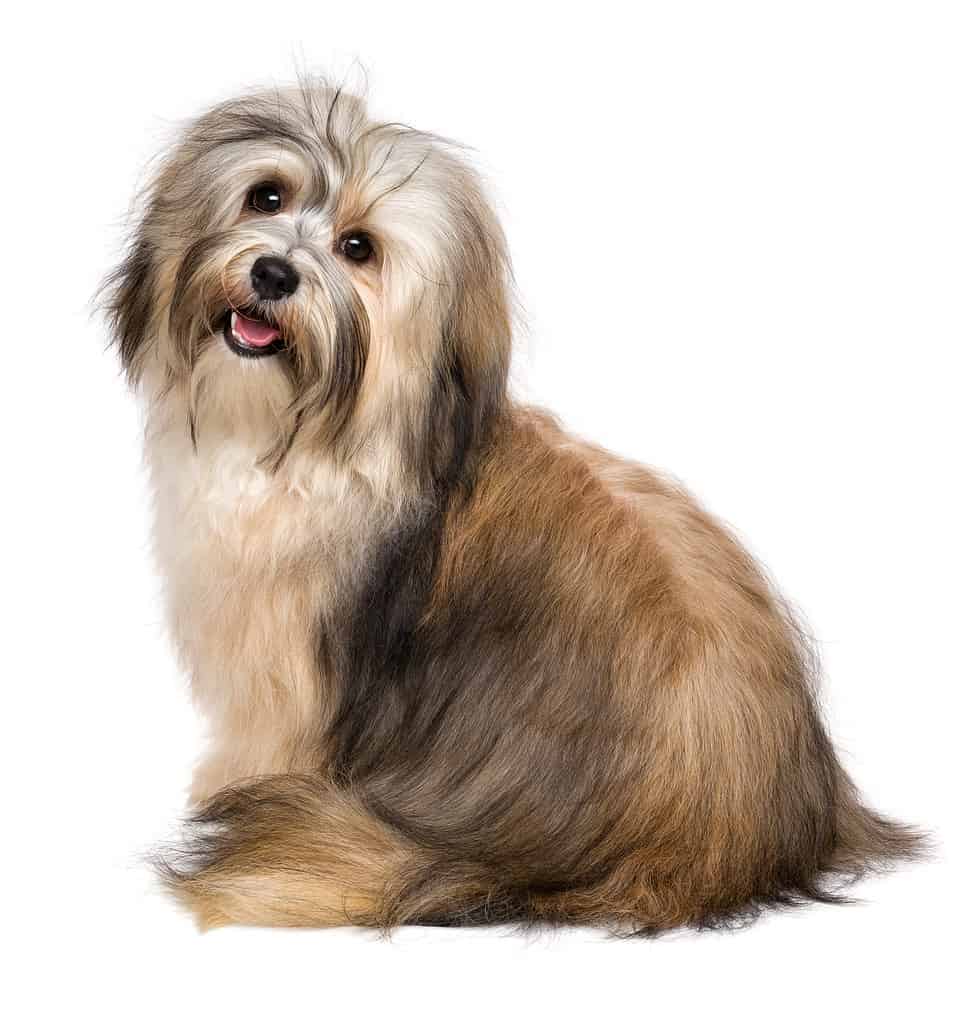
Havanese dogs like to attach themselves to the hips of their humans, earning the “velcro dog” nickname.
©Dorottya_Mathe/iStock via Getty Images
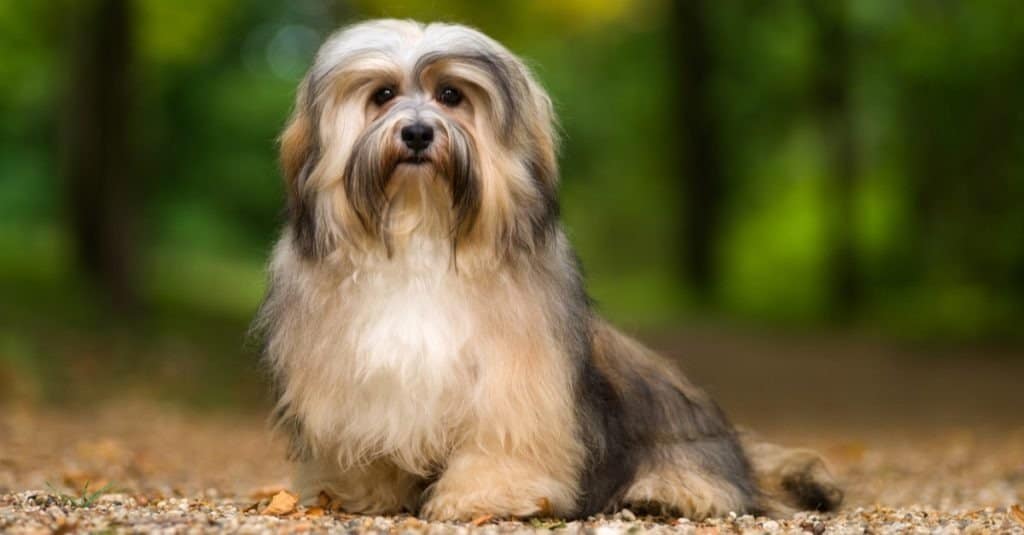
The Havanese breed originates from Havana, Cuba.
©Dorottya Mathe/Shutterstock.com
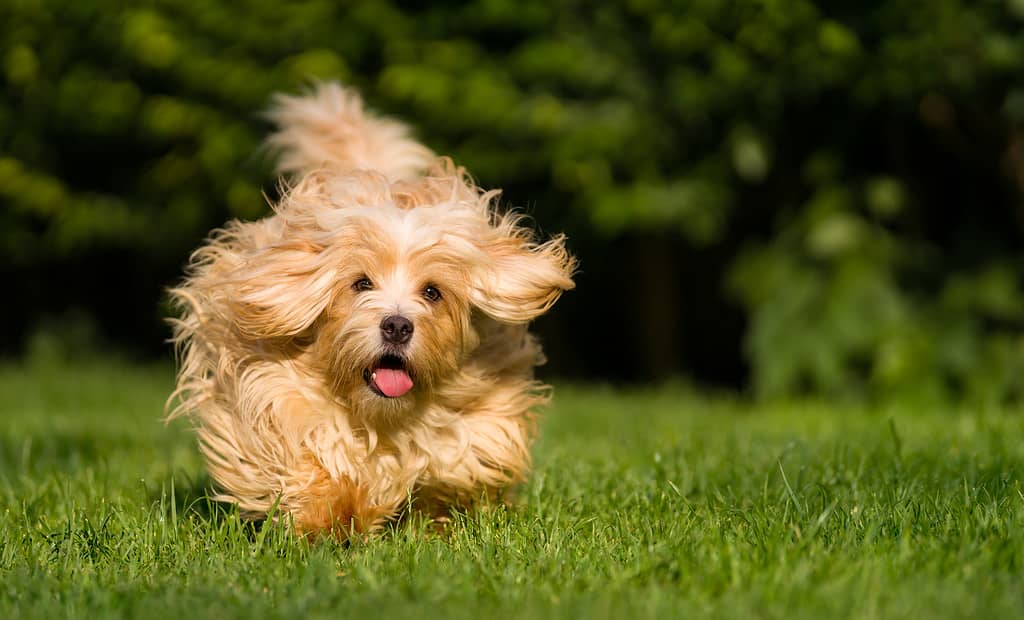
Havanese dogs have a lot of energy and benefit from outside playtime.
©Dorottya_Mathe/iStock via Getty Images
Other Dog Breeds Similar to Havanese
- Bichon Frise, one of the most well-known dog breeds in America and the Bichon family.
- Coton de Tulear, a Madagascarian variation on the French Bichon Frise with long, straight hair.
- Bolognese, another variation on the French bichon. Bolognese dogs were named after the northern Italian city where the long, curly-haired dogs became popular.
The photo featured at the top of this post is © Denise Hasse/iStock via Getty Images
Ready to discover the top 10 cutest dog breeds in the entire world?
How about the fastest dogs, the largest dogs and those that are -- quite frankly -- just the kindest dogs on the planet? Each day, AZ Animals sends out lists just like this to our thousands of email subscribers. And the best part? It's FREE. Join today by entering your email below.
Thank you for reading! Have some feedback for us? Contact the AZ Animals editorial team.






